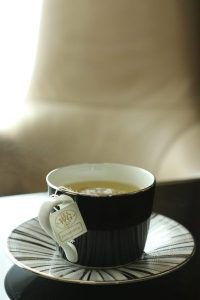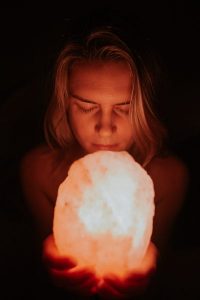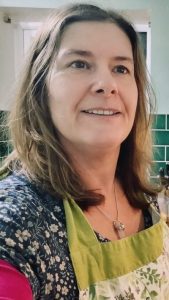This article about how to sleep better is by holistic therapist Emma Sims.
Tips to Sleep Better Naturally

Stress, anxiety, physical pain, menopause, seasonal changes, worry and depression are common factors that disrupt sleep. Consult your GP if you have health conditions or to check if there’s an underlying medical problem before trying the holistic tips. You could also begin by keeping a sleep diary to help identify patterns.
A Good Sleep Begins While You’re Still Awake!
Many people sleep less around the full or new moon. Foods such as caffeine, alcohol and some medication can also disrupt sleep or trigger nightmares. Have a pen and paper by your bed to record any ’to do lists’ that may keep you awake. Writing them down can help get them out of your mind. Also, remember that a well-exercised body can sleep better and a walk through nature soothes the senses.
Start to wind down before bedtime by stopping stimulating phone use – at least half an hour if you can. If you simply have to finish that next level of Candy Crush before going to sleep, turn the screen brightness down!
A milky drink or a night-time herbal tea with oats, valerian and chamomile may be relaxing, likewise similar herbal sleep remedies. A bath, perhaps with chamomile and lavender and Epsom salts, may help relaxation and restless legs. Magnesium is a calming supplement so it may help as well.
Get the Ambience Right
Setting the scene for sleep may mean decluttering your bedroom. A tidy space promotes restfulness, as does the use of relaxing décor colours such as blues and violets rather than mentally-stimulating yellows.
As I mentioned before, the light from phones, tablets or wifi routers may be disruptive if you are “currently” more sensitive (pun intended, humour relaxes us!). Switching to aeroplane mode and an amber screen may be another option. Similarly, for the electric-and-magnetic-field sensitive, not having TVs and other electrical equipment in the bedroom or using air ionisers may help.
Himalayan salt lamps emit negative ions (like being by the sea or under trees) and a reassuring, warm glow. Plants in the bedroom help oxygenise the air and some, such as spider plants and mother-in-law’s tongue, are said to purify the air.

Bed and Bedding
We spend so long in bed, a good mattress is a vital investment as sleep helps our body with cell renewal repair and recharge. Ensure you wash the bedding regularly and it is comfortable for you. Consider blackout curtains to minimise street lamps or the early-morning glow of the sun.
If you have trouble falling asleep, guided meditation or relaxing music can help to soothe some people. Reading helps many people drift off as long as the book isn’t too much of a “page-turner”. A dab of lavender or chamomile on your pillow (not if you’re pregnant) may deepen your sleep if you like the aroma. It may also help relieve tension if you grind your teeth. Check with a dentist for underlying dental problems and consider a course of aromatherapy facial massage if you think you may be holding stress and tension in your jaw. Holistic therapies such as aromatherapy massage, reiki and reflexology invariably help people to sleep better. These therapies are a great benefit and an excellent excuse to book in! Lastly, if you aren’t sleeping, don’t clock watch! If you can’t see what time it is, you can’t worry about the amount of sleep you aren’t getting.
About the Author – Emma Sims

Emma Sims is a complementary holistic therapist, intuitive practitioner and Reiki teacher with 20+ years’ experience in this field. She has a clinic at the Community Resource Centre in Gwersyllt.
Emma has written a book about self-care available through motiv8.me. Obtain further details from emmasims.co.uk.
We hope you enjoyed reading about how to sleep better. Please see our other articles on Lifestyle and Well-Being.
Photo by Rodrigo Pereira on Unsplash.

